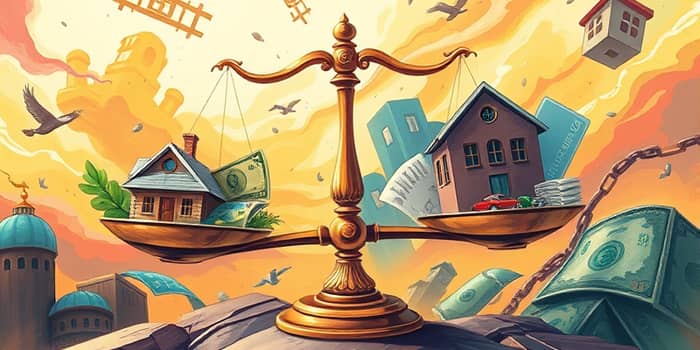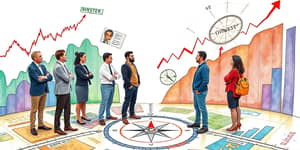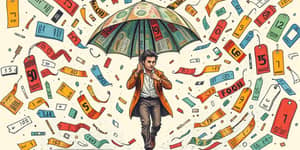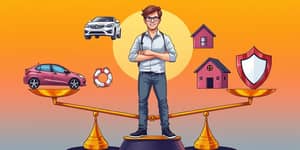Understanding how each purchase influences your financial health can be transformative. By learning to distinguish between assets and liabilities, you can take actionable steps toward building lasting wealth and stability.
Whether you’re managing personal finances or running a business, these simple tests will guide you to smarter spending and stronger net worth.
Understanding Assets and Liabilities
An asset is any resource or item of economic value that you own and expect will generate future benefits. From tangible items like vehicles and property to intangible holdings such as investments or intellectual property, assets serve as pillars of your financial foundation.
By contrast, a liability represents an obligation to pay money or transfer other economic benefits in the future. Liabilities include loans, unpaid bills, and credit card balances that can drain resources if they outpace your asset growth.
The simplest way to remember the distinction is through these core ideas:
- Assets = What you own
- Liabilities = What you owe
The Core Accounting Equation
Your net worth is derived from the fundamental accounting equation, which applies equally to individuals and businesses:
Assets = Liabilities + Equity
Rearranged for net worth, it becomes:
Net Worth = Assets − Liabilities
Keeping this equation balanced ensures that your wealth accumulation outpaces your debts, setting the stage for long-term prosperity.
Typical Examples
Seeing concrete examples can clarify how common items fit into each category:
Real-Life Spending: Asset or Liability?
Everyday decisions about spending can either build your asset base or add to your obligations. Consider these scenarios to see how they break down:
- Using a mortgage to purchase a home creates an asset in the property and a matching liability in the loan.
- Buying equipment for a business adds an asset to your operations, while any financing for that purchase becomes a liability.
- Unpaid utility bills or rent are classified as liabilities until settled.
- Investments in stocks, bonds, or retirement accounts count as assets because they hold future economic value.
- Credit card spending may produce assets if you buy resalable goods, but the unpaid balance remains a liability.
Simple Tests to Classify Spending
To determine whether a purchase is an asset or a liability, ask yourself these straightforward questions:
- Will this expense put money in my pocket or take money out over time?
- Does this purchase increase net worth or decrease it?
- Can I resell it for cash, or does it become an ongoing payment obligation?
If the answer points to generating cash flow or adding value, you’re likely holding an asset. If it leads to recurring payments or debt, it falls under liabilities.
Budgeting Insights and Data
Allocating your income wisely involves recognizing where assets grow and where liabilities accumulate. Typical guidance suggests:
- Bills & Utilities: 25–35% of gross income, including rent or mortgage payments.
- Auto & Transport: 10–15% of income, where car loans are liabilities and owned vehicles become assets.
- Groceries: 10–15%, usually an expense, not classified as asset or liability unless you resell.
Average car loan payments exceed $700 per month for new vehicles and $500 for used ones, highlighting how quickly liabilities can grow.
Experts warn that dedicating more than one-third of your gross income to housing can strain your ability to cover other essential needs.
Expenses vs. Liabilities
It’s vital to distinguish between an expense and a liability. An expense is a cost incurred to operate or live, such as salaries, rent, or utilities, and appears on the income statement.
A liability is an obligation to pay that cost in the future, reflected on the balance sheet. Unpaid expenses often transform into liabilities until they are settled.
Case Study: Opening a Bakery
Imagine starting a small bakery. You secure a business loan for $50,000, purchase ovens and mixers for $30,000, and buy a delivery van for $20,000.
The loan represents a long-term liability, while the ovens, mixers, and van become long-term assets. As you generate sales, you allocate profits to pay down the loan, reducing liabilities and increasing equity.
If you reinvest future earnings into marketing or additional equipment, you continue to build assets that can produce even greater returns, especially during slow seasons or unexpected downturns.
Conversely, if sales falter and you miss loan payments, your liabilities grow, jeopardizing both your credit and the viability of the bakery.
Key Takeaways
By applying these guidelines, you can gain clarity and control over your financial journey:
1. Identify whether each purchase creates a tangible or intangible asset that adds value.
2. Recognize any purchase that produces recurring payments as a liability.
3. Use the net worth equation to regularly assess how your assets and liabilities balance out.
Maintaining a healthy ratio of assets to liabilities reduces risk and positions you to seize opportunities, weather challenges, and build true financial freedom.
References
- https://www.patriotsoftware.com/blog/accounting/assets-vs-liabilities/
- https://ramp.com/blog/assets-vs-liabilities
- https://www.indeed.com/career-advice/career-development/assets-vs-liabilities
- https://quickbooks.intuit.com/r/accounting/what-is-an-asset-what-is-a-liability/
- https://www.bill.com/learning/assets-vs-liabilities
- https://www.rocketmoney.com/learn/personal-finance/budget-categories
- https://www.investopedia.com/terms/l/liability.asp
- https://www.masterclass.com/articles/assets-vs-liabilities










